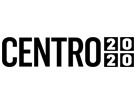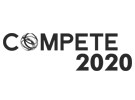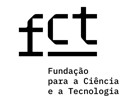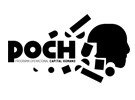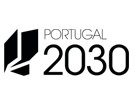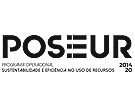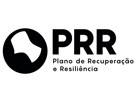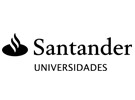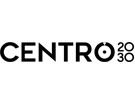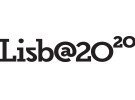



Publication in the Diário da República: Aviso nº 11575/2023 - 16/06/2023
5 ECTS; 1º Ano, Anual, 42,0 TP , Cód. 66333.
Lecturer
- Jorge Morarji dos Remédios Dias Mascarenhas (1)
(1) Docente Responsável
(2) Docente que lecciona
Prerequisites
Not applicable
Objectives
A-Know and understand the various processes of execution of works on the railway (execution techniques, function of materials, execution sequences, equipment involved (and their functions), advantages and disadvantages of each process).
B-Know and understand the various execution processes of complementary railway works (execution techniques, function of materials, execution sequences, equipment involved (and their functions), advantages and disadvantages of each process).
Program
RAILWAY SYSTEM
Introduction (advantages of the railroad)
I-Railway history
-Emergence and evolution of the steam engine; railroad history in Europe; history of the railway in Portugal; Carris history (unballasted track)
II-Railway
-Nomenclature; Types of railroad (wide track, narrow track and inter-track); Basic operation; Basic concepts (line side, track gauge, overwidth, gap, between axles, gauges, piped track, overelevation/scale and number of lanes); Adjacent elements (landfills, trenches, drainage, regulation of the adjoining land); Substructure (foundation, sub-ballast, crown, natural platform); Superstructure (support layer (ballast), sleepers, rails, joint splints (bars), fixings (washers and tirefonds) (rigid and elastic), support plates, switches and counterrails; Switchgear (assembly and implantation), (needle grids: flexible, rigid and mixed)
(crosses: types of crossina)
III- Construction of railway
Constitution of the railway; Referencing and labeling; Gauge; catheterized pathway; Line classification; interview; between axles; tracings in longitudinal profile and in plan; cross slope of the rails; Cross profile and templates; Platform, artwork, trenches, embankments and drainage works; Track superstructure: sleepers, rails and fastening material; track apparatus; Level crossings.
IV - National Railway Network
Directory; typologies; network with exploitation and without exploitation; Maximum loads; sections of electrified line, maximum speeds.
V-Bridges
Characterization (Structural material, length, function, other technical attributes) Components (retaining walls, slopes, abutments, support devices, pillars, deck, track, ballast guard walls, sidewalks, guardrails, drainage, expansion joints, other components )
VI-Tunnels
Concept; Description; Equipment; Via; Diagnosis.
VII-Signalling
Switching apparatus; Train detection; Signals; Orientable block; Convel; Level crossings.
VIII-Catenary
Concepts; Description; Constitution; Equipment; Operation
IX-Traction Energy
Electric traction systems; Substations; Catenary stations; installations
X-Traction current return circuit, grounds and protections
Description; Connections; assemblies; components and cables
XI - Rolling material
Typologies; operators; fleet; equipment; Technical details
XII-Work safety
Concepts; legal framework; works carried out on the railway infrastructure; stakeholders; regulation; work safety planning; security measures; procedures for implementing security; procedures in emergency situations.
XIII-Construction Works
Introduction to construction; preparatory works; demolitions; Earth movements; Foundations (direct, indirect and basements); Land containments; Traditional exterior wall (functional requirements); Building structures (wood, concrete and metal); Roofs (flat and sloping); Constitution and requirements of various constructive details; formwork; Special construction processes; Prefabrication; Construction and the environment. Importance of soil, water, biodiversity and services
Evaluation Methodology
Continuous assessment: Frequency (written test) of parts I to XII (70% weight) + Frequency (written test) of part XIII (30% weight)
Students will only be exempted from the exam if, for any of the assessment elements, the
grade is not less than 8 (eight) values and their weighted average is equal to or greater than 9.5 values.
Exam: Comprises a written test involving all subjects. Students are approved if the classification of the written exam is greater than or equal to 10 values.
Bibliography
- Dif- De, D. (1980). Manual para formação de assentadores de via. Lisboa: Divisão de Via e Construção Civil do Dif- De
- FrunDEC/IST, F. (2009). Construção, monitorização, manutenção e renovação da infraestrutura ferroviária. Lisboa: FrunDEC/IST
- Mascarenhas, J. (2009). SISTEMAS DE CONSTRUÇÃO VOL.XII MOVIMENTO DE TERRAS.. (Vol. XII). Lisboa: Livros Horizonte
- Mascarenhas, J. (2010). SISTEMAS DE CONSTRUÇÃO VOL.I , FUNDAÇÕES. (Vol. I). Lisboa: Livros Horizonte
Teaching Method
In order to explain the main themes, audiovisual media are used with illustrations of the
various details of execution of construction processes and analysis of current construction management documents
During the presentation of the practical cases, students will always have the opportunity to ask questions, allowing them to understand the technical and economic suitability of the recommended solutions and to understand which is the most appropriate choice.
Software used in class
Not applicable

